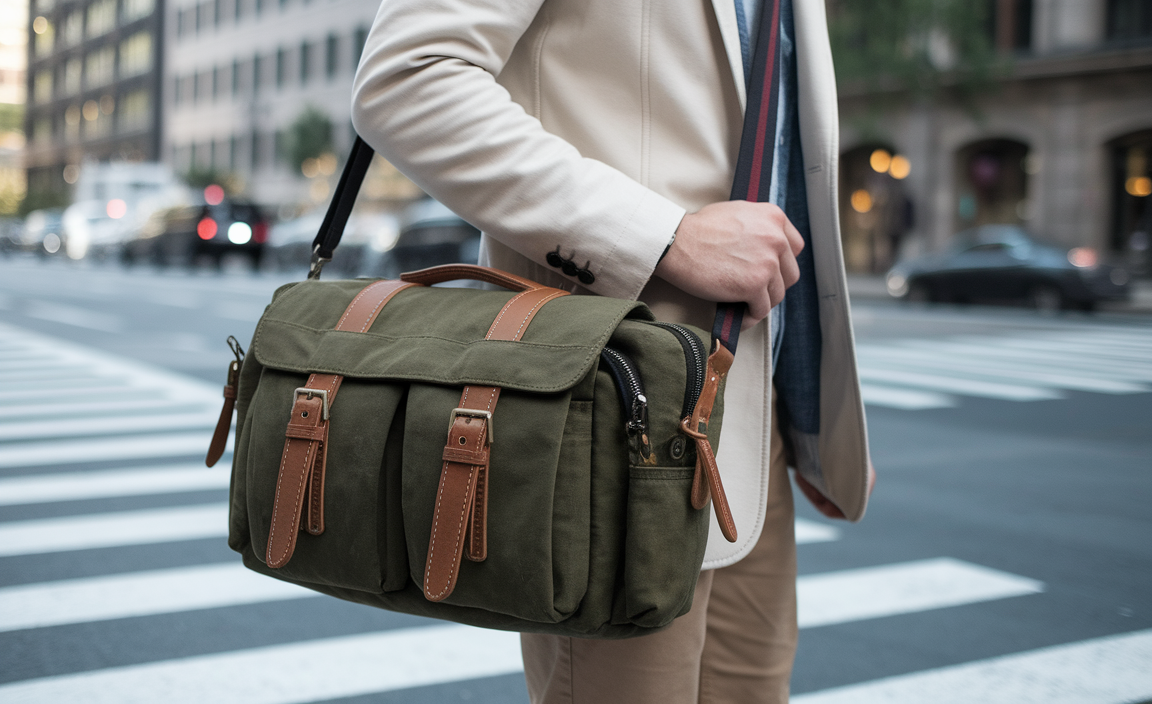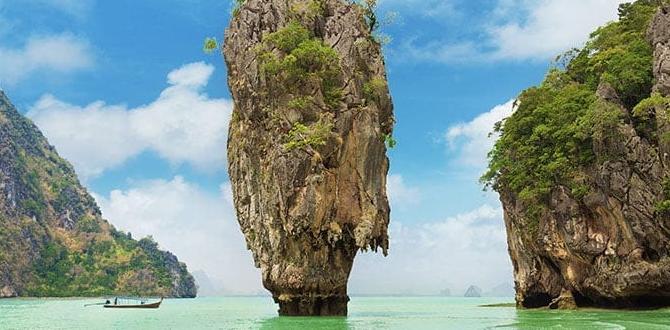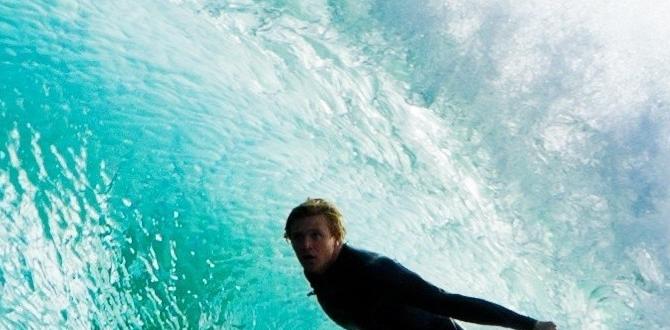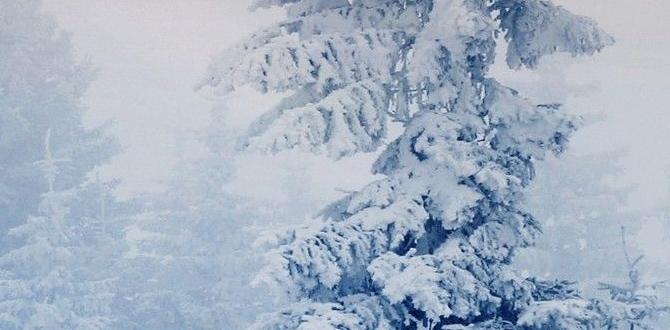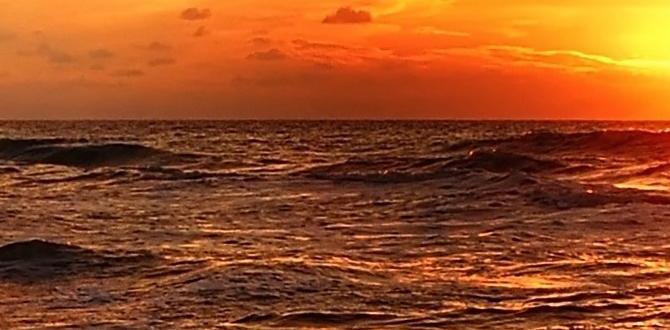Baja California Sunrise & Sunset: Essential Photo Spots
Capture Baja’s breathtaking sunrises and sunsets at these must-visit locations. Discover the best spots for stunning photos, from coastal cliffs to desert landscapes. Get ready for unforgettable light!
Welcome, fellow travelers! Are you dreaming of soaking in the vibrant colors of a Baja California sunrise or marveling at a spectacular sunset? This peninsula offers some of the most dramatic and beautiful skies Mexico has to offer, perfect for photographers of all levels. But with miles of coastline and diverse landscapes, how do you find the perfect spot to witness and capture these fleeting moments? Don’t worry, I’ve got you covered! We’ll guide you through the top locations, making sure you’re in the right place at the right time for those postcard-worthy shots. Get ready to experience the magic of Baja’s golden hours!
Top Baja California Sunrise & Sunset Photo Spots
Baja California transforms into a painter’s palette during sunrise and sunset. The way the light hits the Pacific Ocean on one side and the Sea of Cortez on the other creates a unique photographic playground. Finding the right spot can make all the difference between a good photo and a truly memorable one. Here are some essential locations that consistently deliver stunning results for sunrise and sunset photography.
Los Cabos: Where Luxury Meets Natural Beauty
Los Cabos, encompassing the towns of Cabo San Lucas and San José del Cabo, is perhaps the most well-known destination in Baja California. Its dramatic coastline, luxury resorts, and famous landmarks provide diverse backdrops for your sunrise and sunset shoots.
El Arco & Lover’s Beach (Cabo San Lucas)
El Arco, or “The Arch,” is the iconic rock formation at the southern tip of the Baja Peninsula. It’s a quintessential Cabo landmark. For sunset, the western side offers incredible views as the sun dips below the Pacific horizon, often illuminating the Arch with a warm, golden glow. Many boat tours can take you close for photos. For sunrise, consider a spot looking eastward towards the Sea of Cortez from a higher vantage point, though direct sunrise views over El Arco are limited as it faces west.
Medano Beach (Cabo San Lucas)
While famous for its lively atmosphere, Medano Beach can also be a great spot for sunset. You get wide-open views of the Pacific, and the silhouettes of boats and beachgoers can add interest to your shots. For sunrise, it’s less ideal as it faces west, but early morning light casting across the Sea of Cortez from nearby points can be beautiful.
San José del Cabo Art District & Historic Center
For a different perspective, head to San José del Cabo. The charm of the historic center, with its colonial architecture and vibrant art galleries, offers a unique foreground for sunset. The sky’s colors can paint the buildings in a magical light. While not directly on the coast, the open skies above the town can still produce spectacular displays.
Chileno Bay & Santa Maria Bay
These beautiful, protected bays are known for their calm waters and excellent snorkeling. They offer stunning, unobstructed views of the Pacific sunset. The rocky outcrops and clear waters create fantastic reflections and silhouettes. They are less developed than other spots, offering a more natural feel.
Todos Santos: The “Sinaloa of the Pacific”
Just a short drive north of Los Cabos, this charming artist town is perched on the Pacific coast. Todos Santos is renowned for its dramatic sunsets. The beach here is rugged and wild, with powerful waves crashing against the shore. The sunsets here are legendary, with endless stretches of sand and desert meeting the ocean.
Cerritos Beach
A bit further north on the Pacific coast, Cerritos Beach is a surfer’s paradise. It’s also an absolutely prime location for sunset photography. The wide, sandy beach, backed by rolling hills, provides a vast canvas for the sun’s descent. The surfers catching the last waves add dynamic elements to your shots.
La Paz & The Sea of Cortez: Desert Meets Sea
La Paz, the capital of Baja California Sur, is situated on the tranquil Sea of Cortez – also known as the Gulf of California. This side of the peninsula offers different light qualities and unique landscapes compared to the Pacific coast.
Malecón (La Paz Boardwalk)
The Malecón in La Paz is a fantastic spot for both sunrise and sunset. Facing west towards the Sea of Cortez, it offers panoramic views. At sunrise, the sun rises over the mountains to the east, casting a soft glow across the water and the city. As the day progresses, the Malecón itself becomes a subject bathed in golden light. For sunset, the light hitting the Sea of Cortez can be mesmerizing, with vibrant colors reflecting off the calm waters, silhouetting the town and its iconic sculptures.
Balandra Beach (La Paz)
Often cited as one of Mexico’s most beautiful beaches, Balandra is famous for its mushroom-shaped rock formation (“El Hongo”) and shallow, calm turquoise waters. Sunrise at Balandra is simply magical. The calm, shallow bay creates mirror-like reflections of the sky. The soft light is perfect for capturing the serene landscape. Sunset can also be lovely, though the direct sun sets over the land to the west, so you get more of a colorful sky illuminating the landscape rather than a direct sun-dipping-into-water shot.
Coronado Island
Accessible via boat tours from La Paz, Coronado Island offers pristine beaches and clear waters. While sunrise might be best viewed from the mainland looking towards the island, photographing the sunrise behind the island from a boat or a specific cove can be rewarding. For sunset, the western shores of the island provide stunning views as the sun sets over the Sea of Cortez, painting the sea and sky with incredible colors.
Loreto & The Islands of the Sea of Cortez
Loreto, a historic mission town, is a gateway to the stunning Loreto Bay National Marine Park, a UNESCO World Heritage site. This area offers a more serene and less commercialized experience.
Loreto Waterfront
The waterfront in Loreto provides excellent opportunities for both sunrise and sunset. Facing east, the sunrise over the Carmen Island (Isla Carmen) and the Sierra de la Giganta mountains is breathtaking. The tranquil waters of the bay are often glassy, creating beautiful reflections. The sunset over the land to the west also offers lovely light on the historic mission church and the charming town.
Isla del Carmen & Other Islands
Taking a boat trip out to the islands like Isla del Carmen, Isla Danzante, or Isla Coronado from Loreto can offer unparalleled photographic opportunities. Sunrise viewed from the western shores of these islands as the sun begins to illuminate the mainland or the Sea of Cortez is spectacular. Sunset from the eastern side of an island, watching the sun descent into the vast expanse of the Sea of Cortez, framed by island silhouettes, is an unforgettable sight.
Radio Ranch (near Loreto)
For a more desert-meets-sea experience, consider locations like Radio Ranch. This spot offers dramatic desert flora framing views of the Sea of Cortez, providing a unique contrast for sunrise or sunset photography. The arid landscape takes on a painterly quality in the soft, directional light.
Puerto Peñasco, Sonora (North Baja Border Regions)
While technically in Sonora, Puerto Peñasco (Rocky Point) is a popular destination for those traveling from the US Southwest and shares many similarities with northern Baja coastal areas. It’s worth noting for its accessibility and beautiful desert-meets-sea scenery.
Mirador (Playa Mirador)
Located on a rocky outcrop overlooking the Sea of Cortez, Mirador offers expansive views. It’s an excellent spot for sunset, with the sun dipping towards the horizon. The sea stacks and rocky shores in the foreground add texture and drama. Sunrise here is also beautiful, with the light catching the rocky formations and the tranquil sea.
Cedros Island: A Remote Gem
For the truly adventurous, Cedros Island offers wild, untouched landscapes. This remote island off the Pacific coast requires more planning but rewards with raw, dramatic beauty.
Pacific-Side Beaches (Cedros Island)
The western shores of Cedros Island provide unobstructed views of the Pacific Ocean, making them phenomenal for sunset. The wild, rugged coastline, often featuring dramatic cliffs and sea stacks, makes for epic, dramatic photography. Sunrise on the eastern side can also be striking, with the light breaking over the desert interior and the Sea of Cortez.
Planning Your Photo Trip: Essential Tips
Capturing stunning sunrise and sunset photos in Baja California involves more than just showing up. A little planning goes a long way in ensuring you get the shots you envision, especially when traveling with family or needing to manage personal wellness needs.
Timing is Everything
Golden Hour: This refers to the period shortly after sunrise and before sunset. The light is soft, warm, and more diffuse, creating beautiful colors and long shadows. Plan to arrive at your location at least 30-60 minutes before the actual sunrise or sunset. This gives you time to set up and capture the changing light.
Blue Hour: The period before sunrise and after sunset when the sky takes on a deep blue hue. This can be just as magical and offers a different mood for photography.
Know Your Location
Scout Ahead: If possible, visit your chosen spot during the daytime to check the composition, potential obstacles, and the best angles. This is also important for getting a feel for the accessibility of the area, which can be crucial if you’re traveling with children or require specific accommodations or personal assistance.
Weather & Tides: Check the weather forecast and tide times. High tides can impact beach accessibility, and cloudy skies, while sometimes frustrating, can also lead to dramatic and colorful sunsets or sunrises.
Gear Up for Success
Camera: Any camera will do, from a smartphone to a professional DSLR. The key is to know how to use it!
Tripod: Essential for low-light conditions (sunrise/sunset) to keep your camera steady and avoid blurry photos. A sturdy tripod is a must for sharp images. If you’re traveling with kids, an easily collapsible tripod can be a lifesaver.
Lenses: A wide-angle lens is great for capturing landscapes, while a telephoto lens can bring distant subjects closer. A versatile zoom lens is a good all-around choice.
Extra Batteries & Memory Cards: Low temperatures can drain batteries faster, and you don’t want to miss a shot because you ran out of power or space.
Filters (Optional): A polarizing filter can help deepen colors and reduce glare, while a neutral density (ND) filter can be used for long-exposure photography, smoothing out water or clouds.
Setting Up for Comfort and Convenience
When traveling, comfort is paramount, especially on long days dedicated to capturing specific light. Whether you’re managing personal care needs with adult diapers or ensuring your child is comfortable on a long drive to a photo spot, preparation is key.
Packing Essentials: Beyond camera gear, consider packing:
- Comfortable walking shoes.
- Layers of clothing for changing temperatures.
- Water and snacks.
- A small first-aid kit.
- For parents: child-friendly snacks, entertainment, and essentials like wipes.
- For adults with specific needs: consider bringing travel-friendly adult diapers, which are discreet, absorbent, and designed for comfort during extended periods. Organizations like Depend offer a range of products suitable for travel, ensuring confidence and freedom.
Transportation: Familiarize yourself with how you’ll get to your chosen spot. Will it be a short walk from a parking area, or a more adventurous hike? If you’re renting a car, ensure it’s reliable for the terrain. For longer trips or when managing mobility, consider ensuring your rental vehicle has easy access or sufficient space. Likewise, if you need assistance with personal items like adult or child diapers, plan your stops and have them easily accessible.
Photographic Techniques for Stunning Shots
To elevate your sunrise and sunset photos in Baja, consider these simple yet effective techniques.
Composition Tips
Rule of Thirds: Imagine your frame divided into nine equal sections by two horizontal and two vertical lines. Place key elements of your scene along these lines or at their intersections. For sunsets, this might mean placing the sun on one of the intersection points, or having the horizon line fall on the lower or upper third.
Leading Lines: Use natural or man-made lines (like a beach path, a coastline, or the edge of a rock formation) to guide the viewer’s eye into the scene, towards the sun or the most interesting part of your photograph.
Silhouettes: Position your subject (a cactus, a person, a rock formation) in front of the bright sun during sunrise or sunset. Expose for the bright sky, and your subject will become a dark silhouette, creating a dramatic and artistic effect.
Reflections: Calm waters, especially during sunrise in places like Balandra Beach, can act as perfect mirrors. Get low to the ground to capture stunning symmetrical reflections of the sky and landscape.
Camera Settings for Beginners
Aperture (f-stop): For landscapes, you generally want a deep depth of field, meaning more of your scene is in focus. Start with an aperture between f/8 and f/16.
Shutter Speed: This will vary depending on the light. In brighter conditions, it might be fast. In low light, it will be slower. Use your tripod to avoid camera shake with slower shutter speeds.
ISO: Keep your ISO as low as possible (e.g., 100 or 200) to minimize image noise (graininess). Only increase it if you absolutely need more light and can’t achieve it with aperture or shutter speed adjustments.
White Balance: Most cameras have an “Auto” white balance setting which works well. For a warmer feel at sunrise/sunset, you can try the “Cloudy” or “Shade” presets, or manually adjust it later in editing.
Post-Processing Basics
Even a little bit of editing can significantly enhance your photos. Most smartphones and computers have built-in editing tools, or you can use free software like Google Photos or Snapseed.
- Exposure: Adjust the overall brightness.
- Contrast: Increase contrast to make colors pop.
- Saturation/Vibrance: Boost the intensity of colors. Be careful not to overdo it!
- Sharpening: Add a touch of sharpness to bring out details.
For more advanced editing, consider programs like Adobe Lightroom or Photoshop. Learning basic editing can truly bring your Baja California sunrise and sunset photos to life!
Best Time of Year for Photography
Baja California is a year-round destination, but certain times of the year offer more favorable conditions for photography.
Seasonal Considerations
Winter (December – March): This is the dry season, offering clear skies and pleasant temperatures. It’s also whale watching season, which can add unique elements to your coastal shots. The light can be crisp and the sunsets dramatic.
Spring (April – June): The “mango season” offers warm weather. The desert landscape can still be beautiful, and sunsets remain vibrant. This is a great time for fewer crowds.
Summer (July – September): This is the hottest and most humid season, with a chance of dramatic thunderstorms, particularly in the southern parts, which can create incredible storm-lit skies. However, humidity can sometimes lead to haze,

